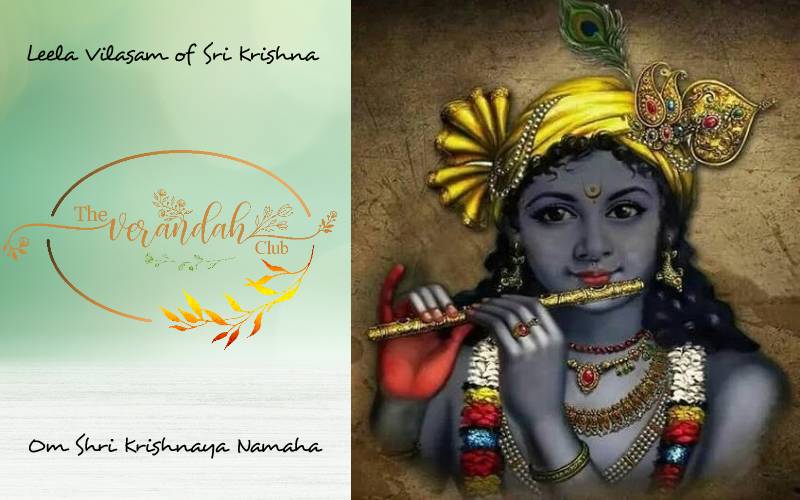
Janmashtami Special
Mere thought of Sri Krishna fulfils us with joy, happiness, and contentment. The Janmashtami (Janma - Birth, Ashtami - the eighth day of the moon) is celebrated with great jubilation all over the world. It is considered to be the day when the Paramatma, Lord Narayana himself manifested as Sri Krishna, the eighth child of Vasudeva & Devaki. The Devakinandana was then parented by Nandagopa & Yashodha at Gokulam.
The birth of the Lord is dramatized in several temples throughout India. Almost every household celebrates the day by preparing and exchanging sweets, by drawing the footmarks of the divine entering one's house, etc. Children dress themselves with new ethnic wear, sing songs, play, and enjoy. Parents perform pooja, read auspicious subjects, and watch television. Elders at home do Japa and spend their time contemplating on the glories of the divine Yadava.
The story of the birth of Lord Narayana as Krishna Khanaiya is well-remembered by everyone and can also be accessed through many sources. So what special does the Verandah Club hold for you?
Our eyes get captivated even at looking the simple form of Madanamohana. His eyes are sharp like the lotus leaves and deep, dark complexion, and a gentle smile on his lips, enchant a true Bhakta. It is not without reason Vyasa exclaims the form of the Saguna Brahman (The God with form) in ‘Bhagavata Purana.’ The saviour of Gokula blooms with youthfulness, shining more than million suns arrayed together. The most lustrous pearls are put to shame, just on glancing Achyuta's teeth.
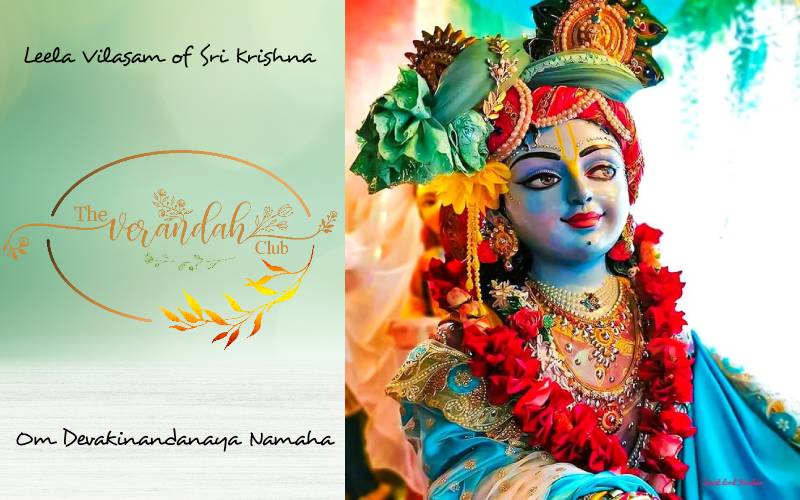
Face like the moon, and set to tune are the curly locks of hair. His breathe washes the bamboo Flute to give out the infinite melody. Expensive crown of peacock feather on his head adorns him the best which bullions of gems cannot. The yellow clad lad plays his Leela-s not alone with Gopika-s, despite them even with us. Devotees get sunk in the ocean of love and merge with Him by surrendering oneself at His Paadaaravinda.
Jewellery cannot bedeck Him, as He himself is all-beauty personified. It can be said His glow enhances the beauty of jewels. Hands are strong to lift the Govardhana, legs with the power to knock off Kamsa with a kick. He is Janardhana, none other than whom all hearts call. Palms are like the fully bloomed lotus, and chest like the sky embracing the earth. It makes us all cry, “Hey! Dayanidhe, Karunamaya! what do we need to fear, when you are the omnipresent.”
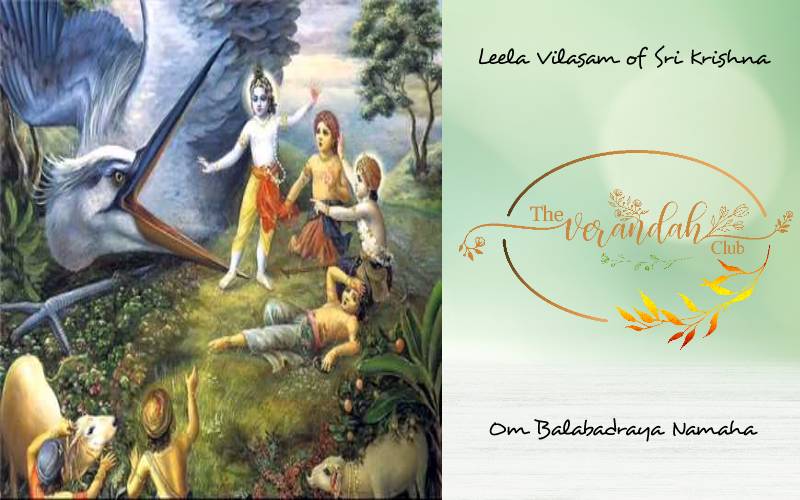
Putana, the demoness, reaches Gokula to kill the new born baby Krishna, but is slayed by the toddler who is Lord Hari himself. The whole village believes that the Madhava is born with Daivaamsha (Divine qualities) to Yashodha, fondly recalled as Yashodhavatsala. The Yadhukulanaayaka (The Hero of Yadu clan) is believed to have protected the village by slaying numerous demons which includes Shakataasura, Keshi, Denukaasura, and Kamsa. He is also said to have wrestled and crushed Mushtikaasura and Chaanoora. The Damodhara is none but Sat-Chit-Ananda, the nature of truth. Besides all these, could anyone forget the cute little Khanaiya who is the Maakhanchor (The stealer of butter)?
In the famous song of Purandara Dasa, ‘Jagadodhaarana,’ he explains the Lord to be the smallest of the small, Anoraniyanaam and largest of the large, Mahatomaheeyanaam. Isn’t it the same the Vedanta and the Upanishads cry? Isn’t it why we respect all beings as the representation of divinity?
The glories of the Mahayogi (Greatest among Yogi-s) is aesthetically brought out in the song, ‘Gokulathil Pasukkal Yellam' from ‘Sri Krishna Gaanam.' The epitome of divinity, ‘Kurai Ondrum illai,’ song elucidates to see Bhagavaan even in a rock on a hillock. In the evergreen song, ‘Ketadhum Koduppavane,’ the Lord Krishna is described poetically as oil in a lamp which stands as a metaphor to the quintessence of life in all beings. ‘Aayarpaadi Maaligayil’ song expounds the grace behind how little Kannan sleeps to a beautiful calf near its mother.
The Lord is found to be adorned with the garlands of Tulasi, and also with the flowers of Chetthi and Mandhaaram. They represent purity and simplicity. Lord Mahavishnu is seen ornamented with jewels and weapons in his four arms, while Krishna is often portrayed as a cowherd holding a bamboo flute in a truly simplistic manner. The difference in the depiction is to denote that the Ishvara can be perceived in all ways, and in fact to remind us that He is beyond our grasp.
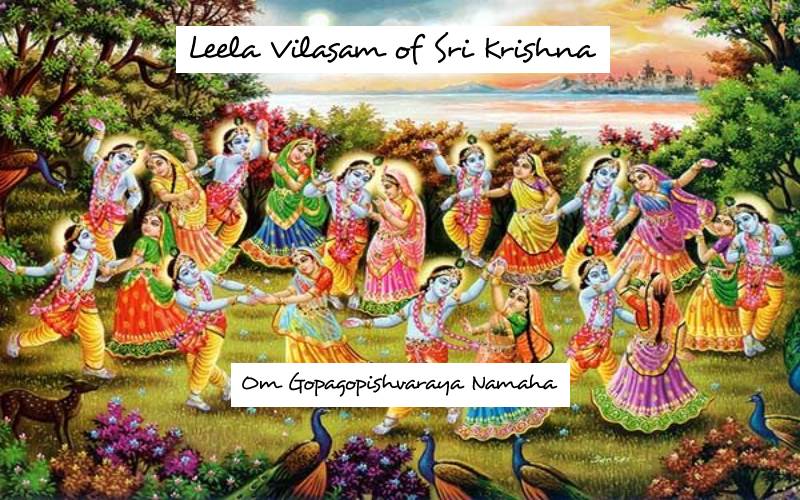
One would also be reminded of the instance how Krishna saved the life of Draupadi at the court of Duryodhana. But, it was only after Draupadi pronounced His name, he came for her rescue. Similarly, it is important for all of us to keep in our minds that he is there to protect us at our call, but we must call out to Him which is the difficult part at any point.
After Krishna had shifted his capital to Dwaraka, one day the Gopi-s went to the city to see their beloved. They were so emotionally attached to the Sridhara that they were disheartened to return. All they finally did was to burn themselves to ashes. This place not only signifies the Ananya Bhakti (Eternal devotion), but also the sand found in this area is said to be yellow in colour. The yellow sand is said to possess several curative properties and it is used for making ‘Gopi Chandan’ which reminds everyone of the Ananya Bhakti.
Can all the words found in the language be able to describe Him?!
On the auspicious day, let’s meditate on His glories and keep our minds filled with Ishvara Chintanam (Thinking about God). Just the act will bestow us with sufficient Punya to gain the knowledge and cross the ocean of Samsaara.

T. R. Surya is the special correspondent of the company. He is an eloquent speaker and compendious writer of English. An avid learner of Sanskrit and Indian scriptures under the guidance of Swami Ganeshaswarupananda and Gita Chaitanya of Arshavidyalaya. His inclination and interests are towards studying Metaphysics and philosophies.
NEXT ARTICLE
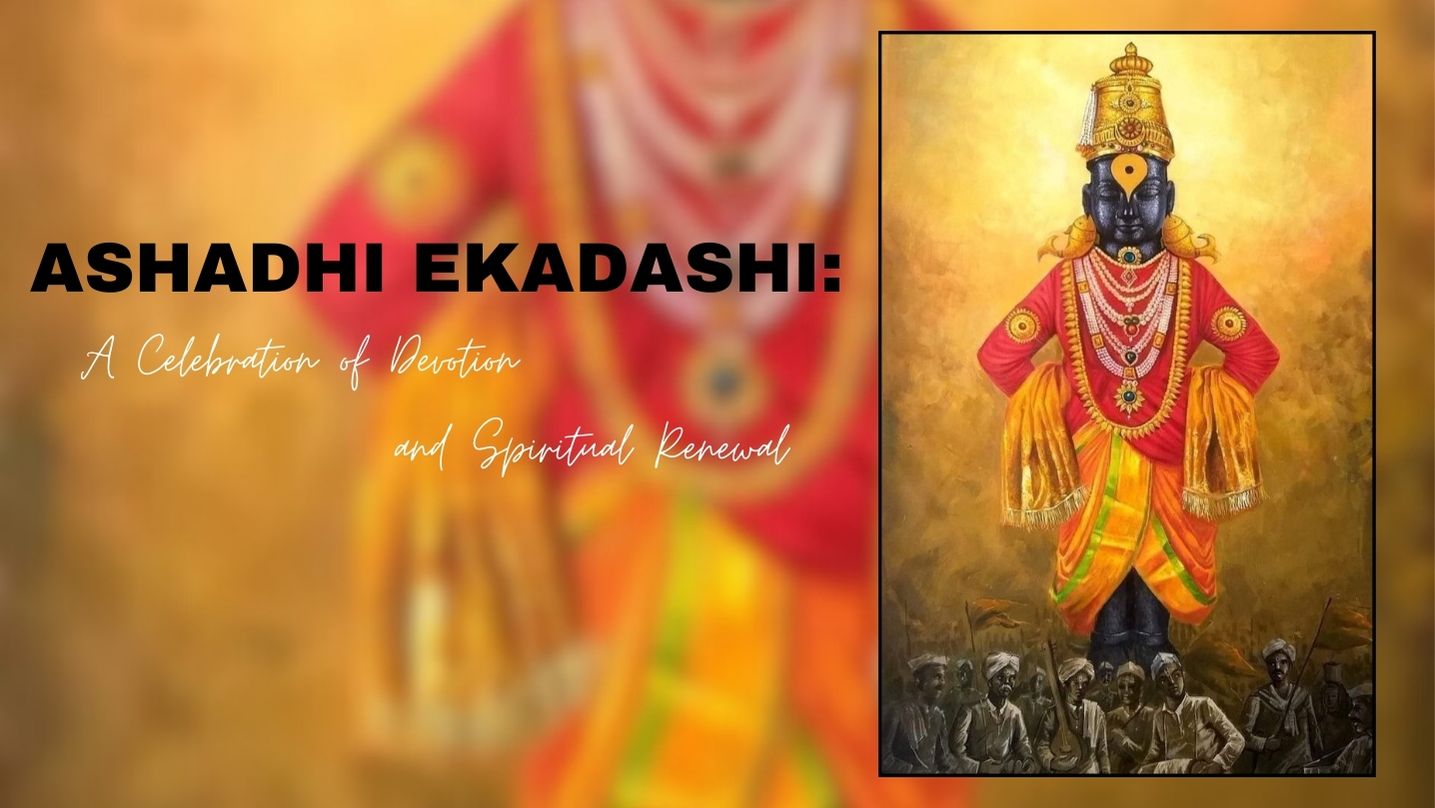
Ashadhi Ekadashi, also known as Shayani Ekadashi, falls on the 11th lunar day (Ekadashi) of the bright fortnight (Shukla Paksha) of the Hindu month of...
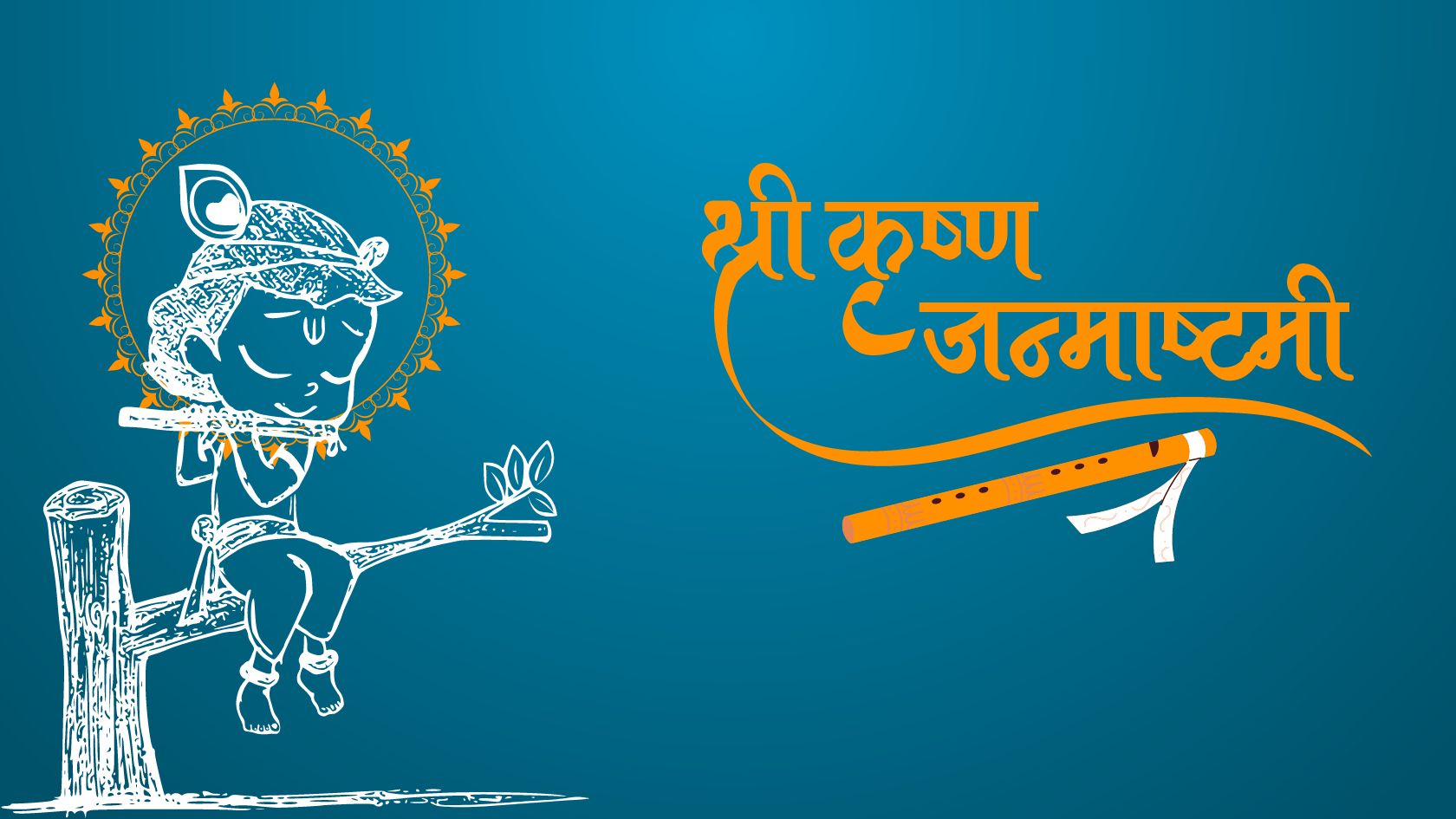
Every year, as the monsoon rains dance on the fields of India, an ancient story unfolds in the hearts of millions. It is the story of Krishna, the bel...
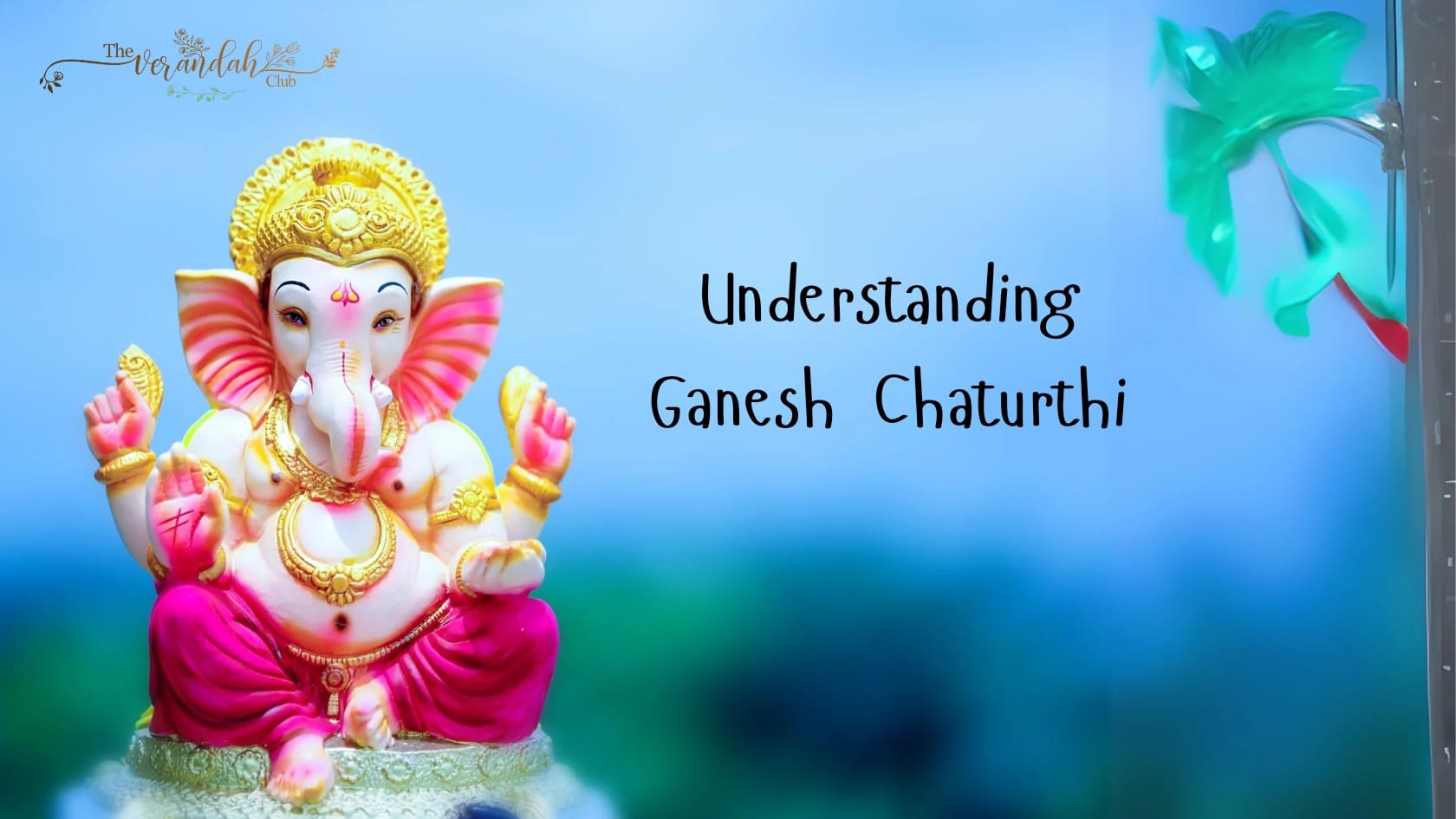
Ganesh Chaturthi, also known as Vinayaka Chaturthi, is a significant Hindu festival that honors Lord Ganesha, the deity revered as the remover of obst...